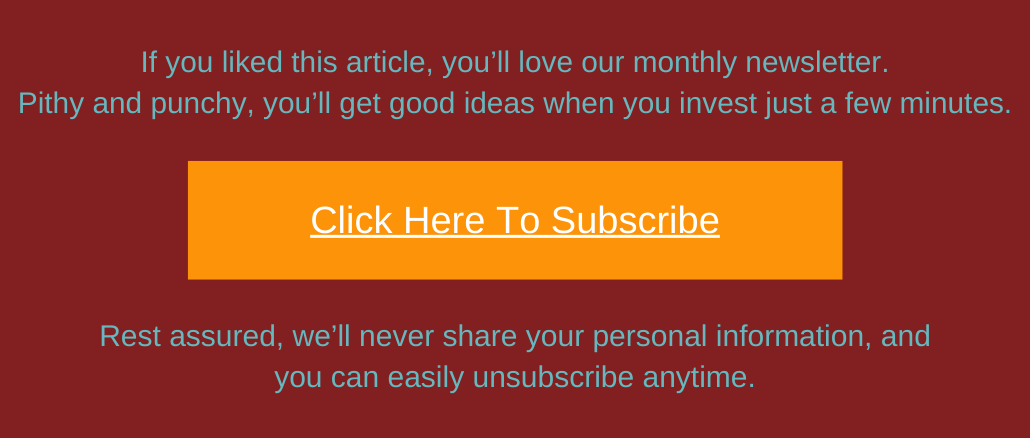Take a Fresh Look at Your Business Development Efforts
If you’ve been reading this newsletter for any time, you know I often urge you to review your business development plan and your BD progress. The reason is simple: it’s easy to focus on what’s right in front of you (whether that’s a success or a failure) and therefore easy to let other activities or results slide off your radar. That’s always a mistake. Even if you were to attain the practice and client roster of your dreams in the proverbial sweep of a magic wand, no one can afford to rest on success, and no one who wants to move forward professionally can let failure derail their efforts.
Let’s take a fresh look at your business development efforts this month, through the lens of appreciative inquiry. Lawyers are trained problem solvers, which means that we often look first for problems. And there’s nothing wrong with that: spotting the problem is obviously the first step to solving it, so checking on what isn’t working is an important part of your review.
It’s at least as important to look at what’s right in your business development plan. You’ll spot your obvious successes and the instances in which it appears success is right at hand. That’s easy.
Let’s look at an example.
Sarah is a midlevel associate IP litigator who focuses on the life sciences industry. Like many lawyers, she came to me with a list of business development activities and goals, but no coordinated plan. We designed a plan and put some meat on her goals by adding a time frame and measurables, and she got busy.
Over time, Sarah experienced a variety of successful outcomes. She’d wanted to raise her professional platform, and she did so through several writing opportunities. She attended a seminar attended by in-house counsel and was able to start building relationships with several people working in-house in life sciences companies. A law school classmate had invited her to events attended by other lawyers (both in-house and outside) and she was growing her network substantially.
She also had some less positive outcomes, including attending other affinity group meetings with zero life sciences company attendance, working to grow relationships but not being successful in getting follow-up conversations or meetings scheduled, and taking part in some unsuccessful pitches.
My client consulting relationships start with a seven-month engagement, and we always conduct a green/yellow/red light analysis at the end of the seven months to ask what the lawyer should continue doing, continue but evaluate again soon, and stop doing. You can probably make a good guess at those lists based on what I’ve shared about her activities.
I asked Sarah to take a deeper look at her business development activity. Beyond the wins, losses, and lack of movement already identified, what’s going right? After some discussion, Sarah came up with several things that were going right and logical next steps:
- Sarah had a business development-focused conversation as a part of her year-end review, along with an offer for regular BD discussions with her team leader, and Sarah devised a non-intrusive way to keep the team leader up-to-date about her BD efforts;
- She noticed that a partner in her firm had been including Sarah in client meetings and helping her to build relationships with senior-level client representatives, so she decided to be proactive in asking for client introductions;
- She reflected on a difficult experience on a matter that left her feeling that a senior associate lacked confidence in her and asked, What else might be going on here? Sarah identified three alternate reasons for what happened that allowed her to consider whether the events were actually about her, how she could follow up to determine whether her feelings were grounded, and how she might approach the senior associate in the future;
- She discovered that conversations she’d had with several contacts revealed interest in a particular legal topic, so she explored writing an article about that topic and was able to secure a tentative agreement to publish her piece in a journal that would reach her ideal clients both internally and externally; and
- She realized that through her networking, she’s started to develop business relationships with several people who might serve as referral sources, so she planned to have conversations with them about referrals that could run in both directions.
Without appreciative inquiry, Sarah likely wouldn’t have noticed or addressed these events in the same way, and she would have missed valuable information and opportunities that support her business development work.
Now, it’s your turn: beyond the obvious, what’s going right with your business development efforts? What does that inquiry reveal about next steps you might take to shift a “going right” activity to a full-fledged win?


